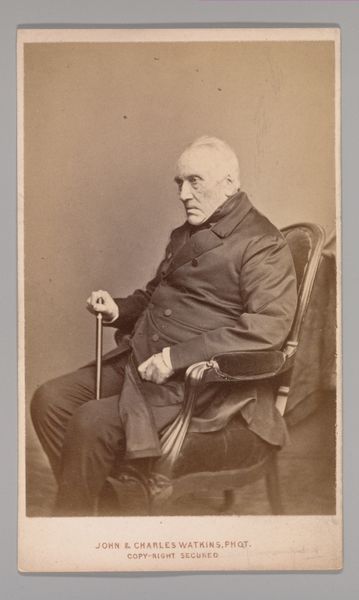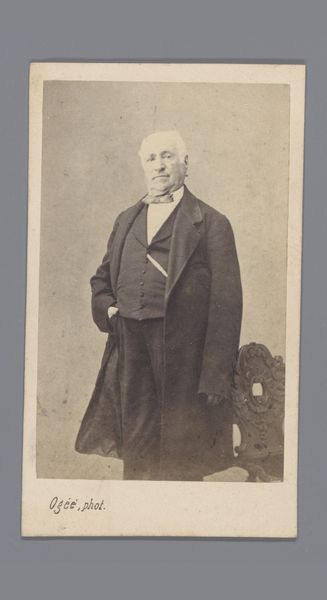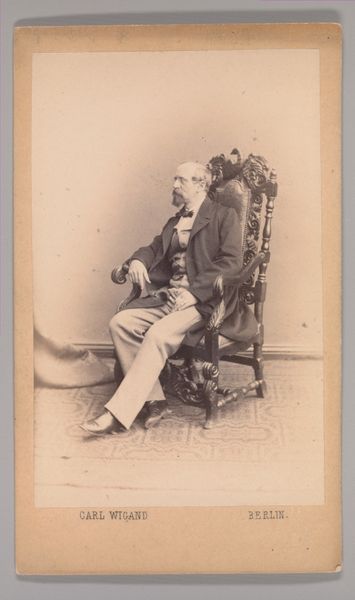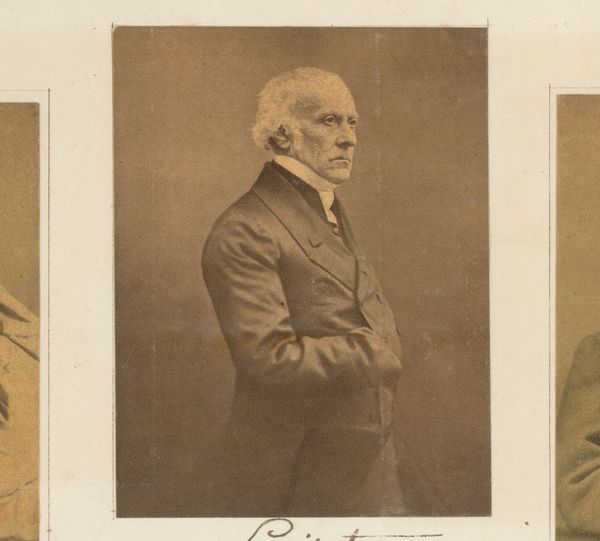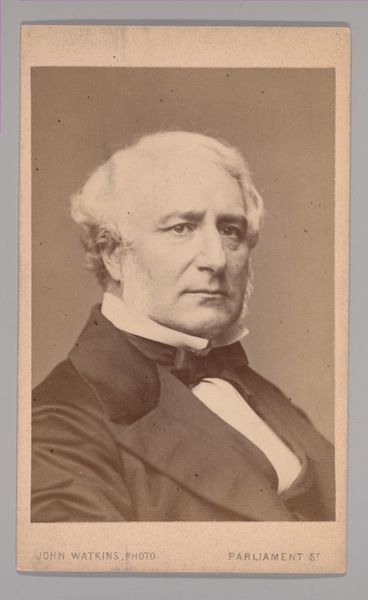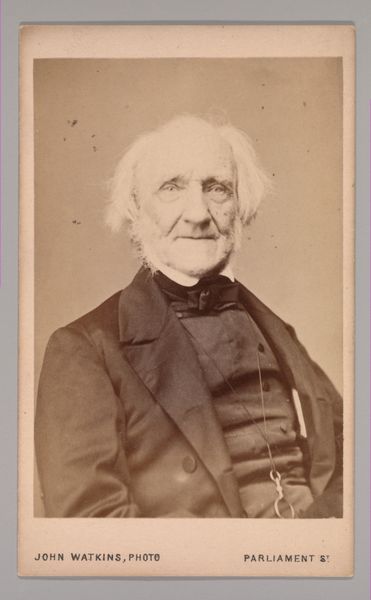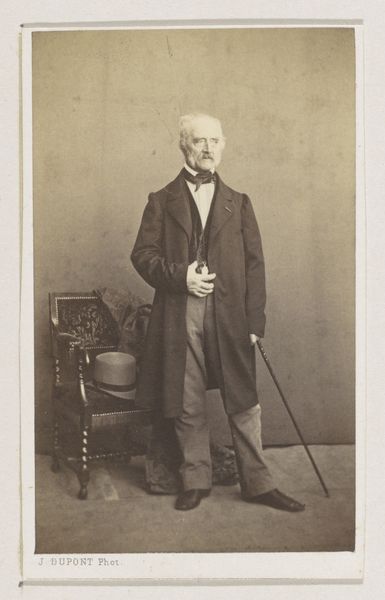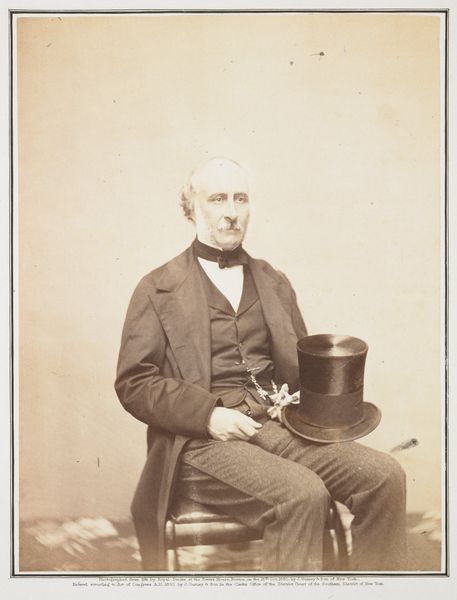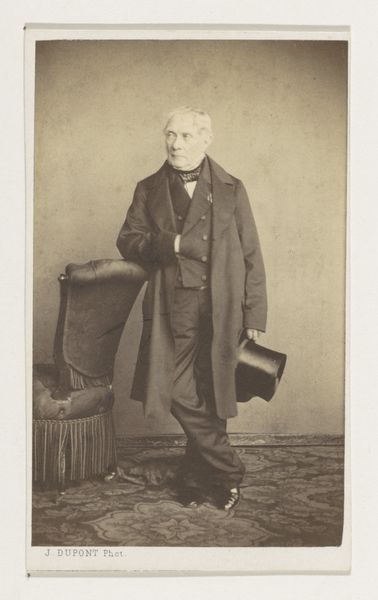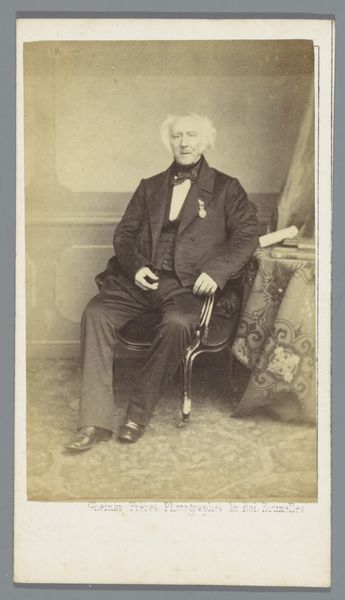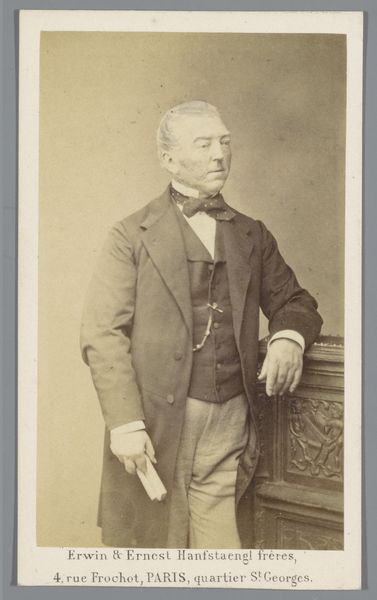![[Frederick Richard Pickersgill] by John and Charles Watkins](/_next/image?url=https%3A%2F%2Fd2w8kbdekdi1gv.cloudfront.net%2FeyJidWNrZXQiOiAiYXJ0ZXJhLWltYWdlcy1idWNrZXQiLCAia2V5IjogImFydHdvcmtzLzUwNWZlZDdjLTE2YzMtNDA5Mi1iNThhLTk2YTcyYTFmNjI1Yi81MDVmZWQ3Yy0xNmMzLTQwOTItYjU4YS05NmE3MmExZjYyNWJfZnVsbC5qcGciLCAiZWRpdHMiOiB7InJlc2l6ZSI6IHsid2lkdGgiOiAxOTIwLCAiaGVpZ2h0IjogMTkyMCwgImZpdCI6ICJpbnNpZGUifX19&w=3840&q=75)
Dimensions: Approx. 10.2 x 6.3 cm (4 x 2 1/2 in.)
Copyright: Public Domain
Curator: This daguerreotype, created by John and Charles Watkins in the 1860s, depicts Frederick Richard Pickersgill. It’s now part of the Metropolitan Museum of Art's collection. Editor: It strikes me as a somewhat melancholic piece, the sitter seemingly gazing off into the distance. There's a weight to the composition despite the relatively small scale. Curator: The Watkins brothers were masters of light and shadow. Notice how the chiaroscuro effect emphasizes the contours of Pickersgill's face and the folds of his clothing. The way they handled the silver plate to capture such minute detail is remarkable. It exemplifies formal romanticism. Editor: Absolutely. And within that masterful technique, it's impossible to ignore the sitter’s class and social positioning. He's dressed in finery, posed formally. How much of that posture is dictated by social expectations and what did that kind of pressure do to individuals of that era? Curator: It’s precisely that tension between internal state and external representation that the photograph captures. Look at the detail in the folds of the drapery in the background, how it provides a setting—almost like a stage—for Pickersgill. Editor: The "stage" itself speaks volumes. The heavy drape, the tailored suit, these signifiers speak of privilege and a constructed reality for many individuals in Victorian society. To what extent did artists such as Pickersgill grapple with class disparity and inequalities inherent in that era? Curator: One can definitely view this through that lens. Ultimately, the piece's success lies in its surface. It captures an exact likeness and explores textures via photographic chemistry, with attention to pictorial elements that are well placed, such as Pickersgill's expression, position of his arms, and hand gesture, which allows insight into a bygone era of portraiture. Editor: A bygone era marked with class stratifications and the beginning of art used to cement those power structures… I do agree that these types of artworks show the beginning of how the elite preserved their legacies, but at what cost? Curator: Perhaps future research will uncover the Watkins’ artistic position. For now, the art object allows for questions regarding historical class identity. Editor: It certainly prompts essential considerations. Thank you.
Comments
No comments
Be the first to comment and join the conversation on the ultimate creative platform.
